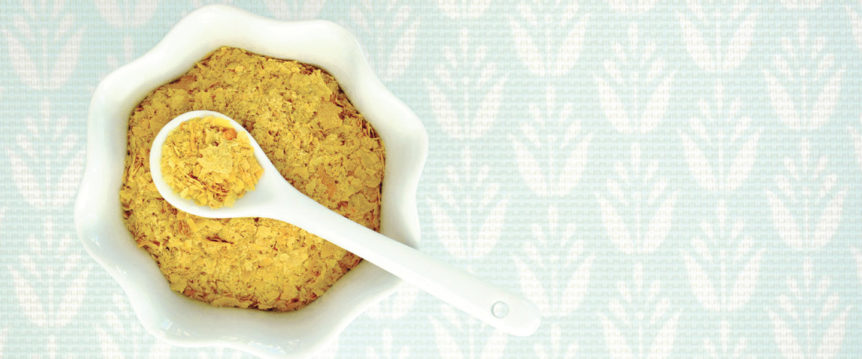“My friend calls it ‘hippie dust,’” laughs vegan chef Mark Reinfeld, referring to nutritional yeast. It’s a product he’s used in his cooking for decades that is just now gaining mainstream popularity as more and more people opt for plant-based eating. Here we take a look at what it is, how to use it and why you might want to make it a pantry staple.
What Is Nutritional Yeast?
Nutritional yeast is a species of yeast called Saccharomyces cerevisiae. It’s the same type of yeast known as baker’s yeast and brewer’s yeast with a major difference: Baker’s and brewer’s yeast contain live yeast cells; with nutritional yeast, heat used in the manufacturing process kills those cells, making it what’s called a deactivated yeast. It’s grown from a sugar-rich starter and is sold in the form of a yellow powder or flakes.
Is It Good for You?
The hint is in the name! Nutritional yeast is a complete protein, meaning it contains all nine essential amino acids that our bodies cannot produce, and you’ll get about five grams of protein per tablespoon. Each tablespoon also provides roughly two grams of fiber and a bit of iron, copper and magnesium (4 to 6 percent of your daily needs). In addition, most nutritional yeast is fortified with a suite of B vitamins, including B12, which can be hard to get enough of—especially for elderly people and anyone who doesn’t consume animal products.
How Do You Use It?
The taste is most often described as cheesy or nutty, and it adds an umami flavor to dishes, Reinfeld says. “It can really enhance savory foods,” he adds. “It’s one of my favorite ingredients.” It can also be used to thicken and add flavor to sauces, soups and gravies.
Tip: Reinfeld prefers the texture of extra-large flakes over the powdered form.
To incorporate it into your diet:
- Sprinkle it over popcorn.
- Stir it into soups.
- Use it in a base for gravies or enchilada sauce.
- Add a little atop a salad, a baked sweet potato, toast or scrambled eggs.
- Blend it into a breading or coating mix.
- Mix some with silken tofu and ground cashews and macadamia nuts for a cheesecake base.
Tip: Nutritional yeast naturally contains a bit of B1 and B2 vitamins, but not B12, as is commonly believed. If you’re hoping to boost your B12 intake, check the product label to make sure it’s B12-fortified.
Did you know?: Nutritional yeast is deactivated, meaning its yeast cells are not alive and cannot cause or worsen yeast infections.
Try:
Raw Ravioli with Sun-Dried Tomato Sauce

